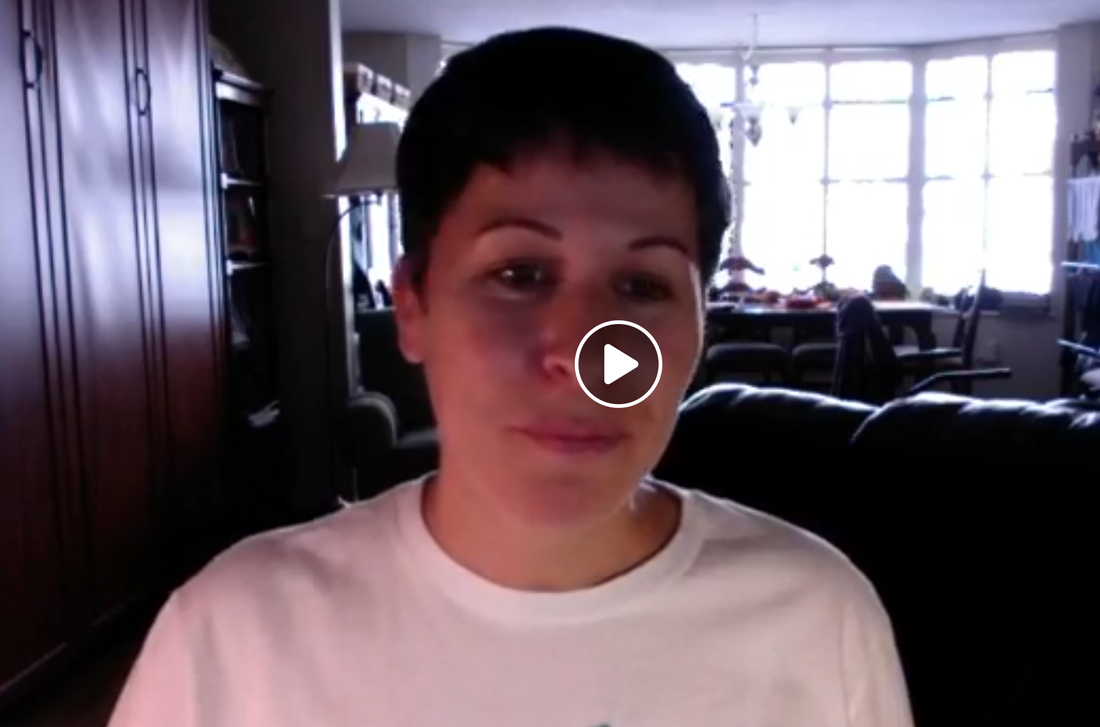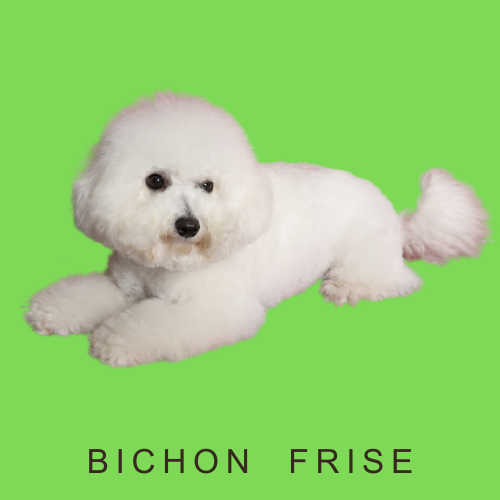 Future Client: Will massage therapy help my pet's anxiety? Me: Yes, but anxiety is always complicated. And now for the longer answer… Anxiety is a feeling of worry, nervousness or unease typically associated with an imminent event or uncertain income. Our pets can experience anxiety for a number of reasons from changes in their routine or schedule, to moving to a new home, loud noises, visual stimuli (hats, umbrellas, wheelchairs and other apparatuses), car rides, introducing a new person or pet into their lives, when a traumatic memory is triggered, or they are forced to confront any new situation—these are mainly fear based anxieties. Separation anxiety (being apart from their humans) is one of the most common anxieties a pet can experience. Anxiety can also develop as they age and is associated with cognitive dysfunction syndrome (memory, learning, perception and awareness decline, leading to confusion and anxiety). Touch through massage therapy is a comforting and close one-on-one experience which can create a sense of trust, relaxation, and well-being. Pets that have trust issues, anxiety, or that have been neglected or abused at some point in their lives can learn to trust, and gain confidence. The comfort and feeling of well-being provided by massage helps improve mood and therefore the mental state of an anxious pet. This is important for a number of physical reasons. The mental state of an animal (or human, for that matter) affects the sympathetic nervous system. Shelter dogs, for example, experience stress symptoms including elevated heart rate and blood pressure. Massage therapy helps reduce heart rate and blood pressure, therefore reducing stress, which is important because illnesses gain a foothold when stress diminishes the body's immune system. Massage therapy reduces the physical and mental components of stress, which in turn helps the body feel balanced and rejuvenated, able to defend itself properly. For pets that are experiencing the stress of recovery from an injury or those in emotional distress from being in the shelter system, mental state is key. Massage therapy stimulates the release of oxytocin, serotonin and endorphins, all of which improve the mental state, which is critical to their rehabilitation. Massage also helps to manage pain, therefore alleviating the associated depression and/or anxiety a pet experiences. How do you know if your pet is experiencing anxiety? Dogs experiencing anxiety may experience the following symptoms:
Cats will often develop destructive behaviours that they have not exhibited before, such as scratching furniture or clawing at curtains. They also may:
Massage is a great way to help your pet deal with anxiety, but you can also try aromatherapy via a calming collar, or Bach Flowers Rescue Remedy (via spray or drops), acupuncture or medication — always get the advice, prescription or referral from your veterinarian — that includes massage therapy. You and your vet must always be on the same page when it comes to the mental, physical and emotional health of your pet. There is also the behavioural training option, involving desensitization and counter-conditioning. And don't forget Reiki, a wonderful energetic healing modality (also available through Kuri K9 Massage)!
Thanks for reading! Want 50% off your next (or first) pet massage session? Email/Call/Text me with the code word ANXIETY when you book — anytime before November 5th, 2019. Also, keep in mind that a group of three-four massages close together (no more than one week apart each) is the best way to see results quickly. I offer packages of four massages for large dogs ($216), medium/small dogs ($168) and cats ($120), which will save you 20%! Look for my next post in the series, which deals with how massage helps pets with compensation when injury occurs, Tuesday November 5th, 2019…  Future Client: Will massage therapy help my dog's arthritis? Me: YES! Yes, yes, yes! And now for the longer answer… Arthritis is one of the most common ailments an older pet can suffer from. It is a chronic pain that occurs when an unstable joint causes the bones to move abnormally within the joint. Over time this unnatural movement causes the cartilage that lines the joints to erode. Then the bone rubs against bone, which creates chronic inflammation. Large and Giant breed dogs are probably the most prone, but it can happen in any dog or cat breed. Massage therapy eases arthritis because it improves range of motion by stimulating blood circulation to the bone, directly nourishing it. Regular sessions keep joints well nourished and therefore well lubricated, which maintains, and even increases, range of motion. Your pet experiences less pain, and their mobility improves. CHECK OUT THE FACEBOOK LIVE INTRO I POSTED ABOUT THIS POST! So, how can you tell if your dog or cat has arthritis? You need to get an official diagnosis from a vet (they would do an physical exam, an x-ray or possibly an analysis of joint fluid to determine if arthritis is affecting your animal), but there are a few clues to watch out for:
Dogs and cats that are overweight have a more difficult time with arthritis, therefore one of the best things you can do, besides massage therapy, is make sure your arthritic pet is a good weight. Supplementation is also a possibility (glucosamine, chondroitin, fatty acids), but keep in mind that getting the balance right in your pet's diet is not easy and should be done with the advice of your vet. Your vet may also recommend CBD oil or pain medication. You might also consider hydrotherapy wraps — in this case, hot wraps placed strategically over the arthritic area(s). This is a service I also provide, but soon I will also have a Hydrotherapy How-To (for dogs) video uploaded, so that you can try this method on your own (with your vet's okay). Light exercise (brief and frequently throughout the day, rather than longer play sessions or walks) to keep the joints loose and to help tone those atrophied muscles can be helpful, especially while the arthritis is in an earlier stage. Traction is important, too, so make sure to have plenty of carpeting for your pet to walk on (in some cases you can also use socks with tracking pads on the soles, if your pet will wear them). Ramps or steps to help your pet get up and down from the couch or bed will be appreciated, too. A comfortable and supportive bed will also go a long way. For more information about keeping your pet safe from common injuries, download my "5 Tips To Keep your Pet Healthy and Happy At Home...Between Massage Therapy Sessions" document HERE. Thanks for reading the first post of my new blog series! Want 50% off your next (or first) pet massage session? Email/Call/Text me with the code word ARTHRITIS when you book — anytime before October 22nd, 2019. Also, keep in mind that for conditions like arthritis, a group of three-four massages close together (no more than one week apart each) is the most effective way to tackle both pain and mobility. I offer packages of four massages for large dogs ($216), medium/small dogs ($168) and cats ($120), which will save you 20%! Look for my next post in the series, which deals with how massage helps pets with anxiety, Tuesday October 22nd… Click HERE to read the next FAQ post...
And now we've reached the Non-Sporting Group, starting with the American Eskimo Dog. These guys functioned as watchdogs, performers and farm workers! Their coat is a straight, stand-off double coat of medium length coming in white or white with biscuit cream colour. * American Eskimo Dogs descended from a variety of spitz developed in Germany. They are bright and eager to please as well as independent and tenacious. They also love cold weather, naturally. Daily long walks or good jogs are necessary, but the smaller Espies need only a short walk or lively romp. The double-coat needs brushing and combing twice weekly (and more often when shedding). * Health concerns include patellar luxation, hip dysplasia and PRA. The Bichon Frise originates in the Mediterranean region and functioned as both a companion and performer. Their undercoat is soft while the outer coat is coarse and curly, coming in white with possible cream shadings. * Bichons come from a family of dogs known as Barbichons—they were once divided into four types, but it is the Teneriffe type that later became the Bichon Frise (developed on the Canary Island of Teneriffe). Bichons are perky, bouncy, playful fellows that are also sensitive and affectionate, and can bark a lot and may also be hard to house-train. They need a romp or short walk daily and their coat needs combing every other day plus trimming every two months. It is also difficult to keep the beard white. * Health concerns include patellar luxation, allergies, cataracts and hip dysplasia. Boston Terriers were always companion animals, but were also once ratters. Their coats are smooth and short, coming in brindle, seal or black with white markings on the muzzle, between the eyes, and forechest, possibly with a white collar and lower legs.
* Coachmen around the year 1865 employed wealthy folk from Boston to interbreed some of their employers' one dogs—one cross being between an English Terrier and a Bulldog, resulting in a dog named Hooper's Judge, whose progeny were bred to smaller dogs. These are saucy and playful dogs devoted to their owners. Some bark a lot and some may be aggressive toward strange dogs. Most of their exercise needs can be met with a romp in the yard or similar. Some wheeze and snore and most don't tolerate heat. * Health concerns include patellar luxation and brachycephalic syndrome |
AuthorRegan is a certified Canine Massage Therapist (CCMT), has certification in First Aid and CPR for Pets, and some beginner training in Herbal Remedies and Aromatherapy for personal use. Archives
July 2024
Categories |

















 RSS Feed
RSS Feed